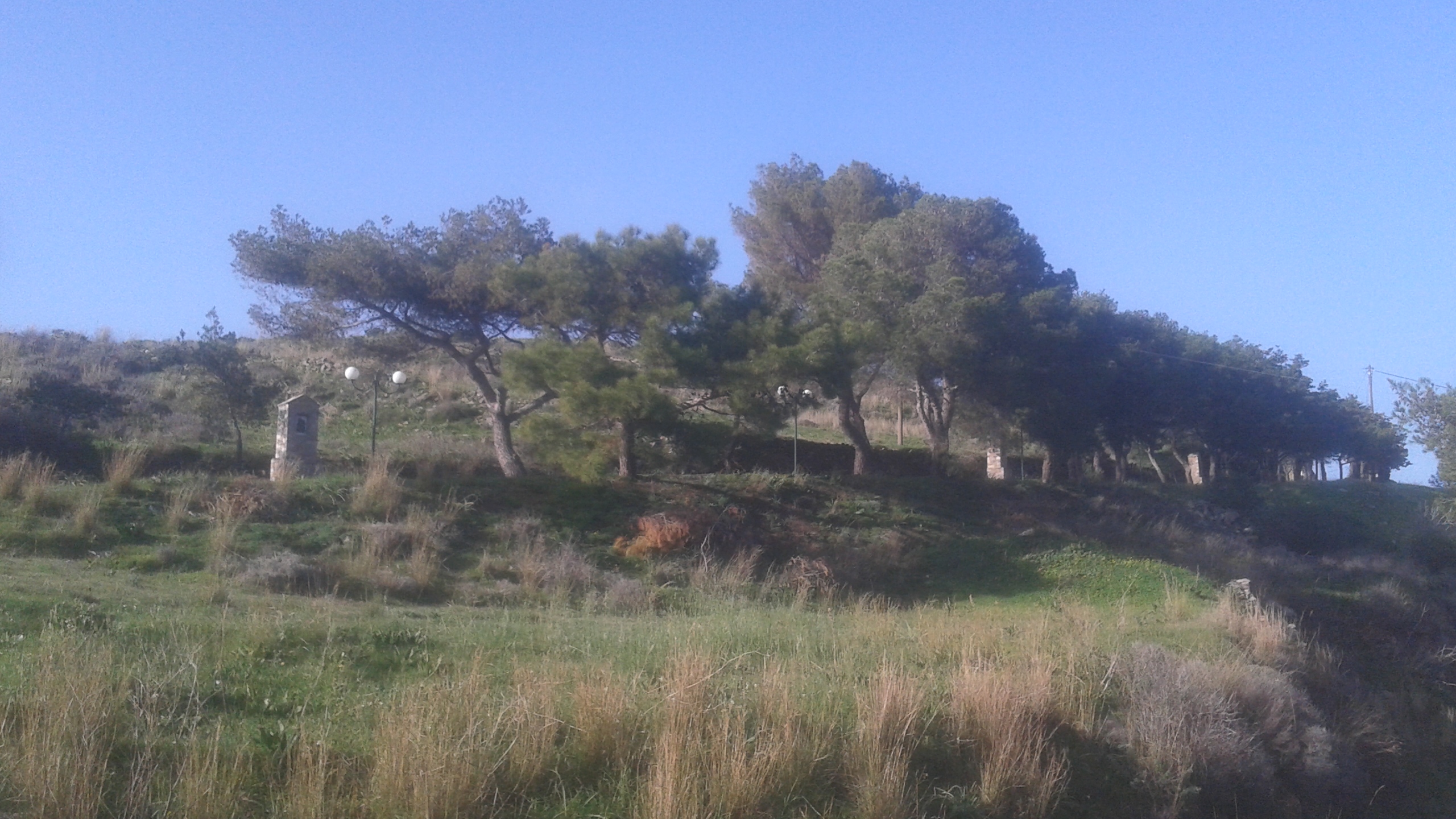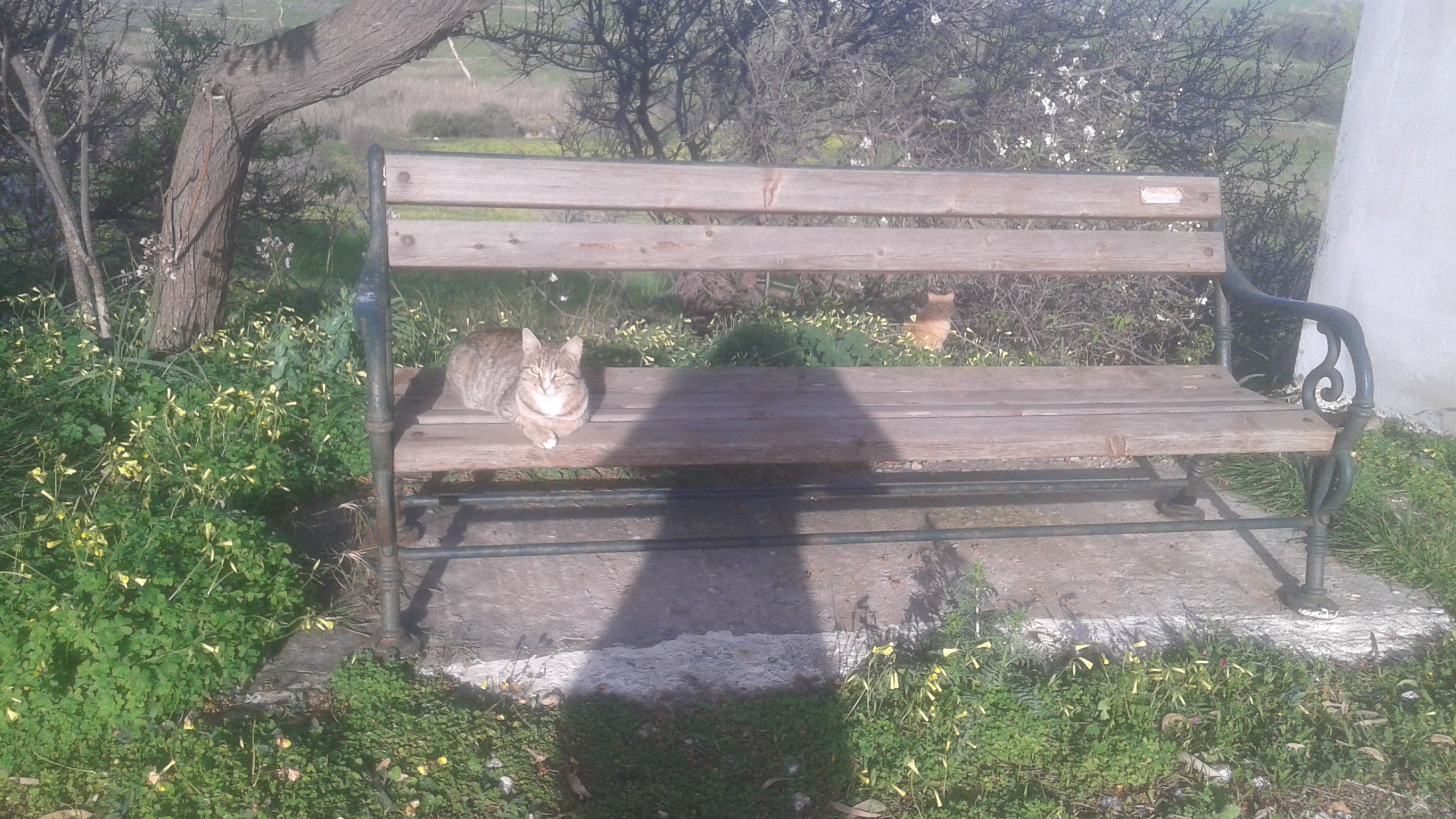Part three

Potential adverse effects of meditation and mindfulness practices, a poem, and some photos from today’s walk in the countryside
“And I thought, one, what other assumptions are we making? [I was] somebody who had really no training in the history of, or where these practices come from, what they were originally designed for, and just kind of buying into all the marketing without really any critical analysis, and applying that to my science. So what other assumptions are we making? And then the second question was, what other information are meditation teachers sitting on that we should be asking them, as researchers? Willoughby Britton, Mind & Life Podcast: When Meditation Causes Harm
“There’s an assumption that meditation is free of risks or side effects. But ancient meditation manuals, scientific reports, and mindfulness program guidelines have documented the potential risks of meditation including hypersensitivities, insomnia, anxiety, dissociation, re-experiencing of traumatic memories, and psychosis.” Willoughby Britton

 Today’s post is a continuation of the previous post, and in this post I have included links to academic and non academic articles, and talks around the adverse effects of meditation practices that research has focused on more recently, after a somewhat selective focus on the positive effects of these practices only. So, below are references to some of the things that I’ve been looking at over these last two months. I might be posting more in later posts as I sift through material. The material below and the research findings have mostly been written and conducted by people in the meditation world or with experience in meditation practices.
Today’s post is a continuation of the previous post, and in this post I have included links to academic and non academic articles, and talks around the adverse effects of meditation practices that research has focused on more recently, after a somewhat selective focus on the positive effects of these practices only. So, below are references to some of the things that I’ve been looking at over these last two months. I might be posting more in later posts as I sift through material. The material below and the research findings have mostly been written and conducted by people in the meditation world or with experience in meditation practices.
a) I will begin with two extracts from a podcast talk, When Meditation Causes Harm – Mind & Life Podcast, in which Willoughby Britton demonstrates how in promoting meditation there has been a selective focus on certain facts and potentials of meditation without taking into account the bigger picture, and also that too much of a good thing may actually lead to adverse effects. Furthermore, not taking into account individual differences and context and practitioner’s differing goals can also lead to unwanted results and put people at risk.
Two of the areas she touched on in the talk:
In relation to meditation and changes in perceptual sensitivity, Willoughby Britton says: .
“So things like, colors get brighter……Just, you become more sensitive, in a multimodal sensory way. And I think this is also a good example of some of the, why appraisal became such an important part of the interview and the study, because perceptual sensitivity is pretty awesome…… Everything gets richer and certain colors get richer. The sound dimension can be really cool when you’re in nature and you hear all the birds and you hear the river and you hear the wind, and it’s how lovely that is. And how quickly that can change when you come home to the city, and you hear every car door slam. And when the truck goes by, you feel it vibrating through your body. And so, what one of the main take home lessons that we learned from that study was that no experience is really inherently adverse or negative. But that the valence can really flip at any time. And so, you have to really watch, it’s not a stable trait of the experience. And so, the same experience can flip valence in the same person. Similarly, the same experience or similar experiences can be appraised as positive or negative by different people depending on their cultural context, or their goals, or their orientation of definitions of well-being. “
In relation to meditation and to anxiety, fear, panic, she says:
“And I would say in all of the work that I’ve done in different populations, continue to be the most common. So of things on the anxiety spectrum… You know, emotions can get louder or softer. So you can see increases in emotional liability, emotional reactivity, just every emotion can be sensitized, just like your senses. But you can also see the opposite happen. So you can also see a loss of emotion, emotional blunting, more kind of flat, loss of motivation, types of things. On the more serious side, we have seen people develop symptoms that clinicians would categorize as psychosis or mania, and often require hospitalization. And it looks like certain types of meditation practice are pretty good at strengthening prefrontal control over the limbic system, and that will really help people will be able to regulate their emotions. There’s lots and lots of converging data for that, which is great. But what if you keep going? What if you keep training, and keep regulating… What if you over-regulate your limbic system and your amygdala? ………. I discovered that if you look at the neural correlates of dissociation, which is one of the things we were seeing as a result of meditation, and is characterized by a very flat effect—people are not experiencing their emotions as strongly—it has almost identical neural correlates to what I was touting as the mechanism of all the benefits, which is very strong prefrontal activation, and consequently a down-regulation of the limbic system and the amygdale………So for anxiety, I think one of the places to look is the insula cortex. So if you look, often we talk about the insula cortex and interception as being like, you can never have enough body awareness. And if you pay attention to your body and do body scans and focus on your breathing, and really just bring attention to the sensory dimensions of your experience, then everything will be better because you won’t be engaged in thinking as much. That’s kind of the model that I was taught. But if you look at the RDoC criteria for anxiety (which is sort of the NIH’s plan to try to map out all the ways we can biologically map certain states and certain problems), you’ll see that insula activation is highly correlated with all kinds of different anxiety-related issues. Anxiety, panic disorder, flashbacks, are all associated with high levels of insula activation. And we know that having very strong interoceptive accuracy, doesn’t always pan out to be more beneficial for your well-being. It can often be associated with anxiety proneness. And we’ve heard a lot from, now there’s a whole kind of movement in trauma-informed modifications and trauma- informed mindfulness that if have a trauma history and you’re prone to anxiety, that doing body-based meditation practices might be contraindicated. That the more time you spend focusing on your body,that can really amp up the insula and kind of amp up all of your emotional intensity.”

b) A podcast discussion, titled: The Risks of Meditation, in which David Treleaven talks with Willoughby Britton, Ph.D. and Jared Lindahl, Ph.D., who are considered experts in studying the difficulties people often encounter in meditation, as well as the factors that contribute to these experiences. They are the co-authors of the Varieties of Contemplative Experience (VCE) study [see below]—a landmark investigation into the nature of meditation-related difficulties, including trauma at: https://davidtreleaven.com/tsm-podcast-episode-willoughby-britton-jared-lindahl
c) Willoughby Britton and Jared Lindahl, co-directors of Brown’s Clinical and Affective Neuroscience Laboratory (CLANlab), suggest that “there’s an assumption that meditation is free of risks or side effects. But ancient meditation manuals, scientific reports, and mindfulness program guidelines have documented the potential risks of meditation including hypersensitivities, insomnia, anxiety, dissociation, re-experiencing of traumatic memories, and psychosis.” They have conducted the largest study to date on the risks and challenges of meditation, “The Varieties of Contemplative Experience,” [https://www.cheetahhouse.org/vce ], which took more than a decade to complete. Interviews with more than 100 Buddhist meditation teachers and meditators yielded 59 categories of meditation-related challenges and 26 influencing factors that determine whether these experiences are mild and fleeting or long-lasting and debilitating.
d) A list of the variety of colours of potential symptoms at: https://www.cheetahhouse.org/symptoms-
e) One publication of the VCE study: I Have This Feeling of Not Really Being Here’: Buddhist Meditation and Changes in Sense of Self by Jared R. Lindahl, Willoughby B. Britton Published 2019 at: https://www.imprint.co.uk/wp-content/uploads/2021/03/Lindahl_Open_Access.pdf‘
In the abstract Lidahl and Britton write that a change in sense of self is an outcome commonly associated with Buddhist meditation; however, the sense of self is construed in multiple ways, and which changes in self-related processing are expected, intended, or possible through meditation is not well understood. They report that in a qualitative study of meditation-related challenges, six discrete changes in sense of self were reported by meditators: change in narrative self, loss of sense of ownership, loss of sense of agency, change in sense of embodiment, change in self–other or self–world boundaries, and loss of sense of basic self, and that these changes in sense of self could be transient or enduring, positive or distressing, enhancing or impairing. Additionally, the changes were given varied appraisals, ranging from insights associated with Buddhist doctrines to psychopathologies such as depersonalization. The more global changes in sense of self were associated with higher levels of impairment, and also, the results have implications for both Buddhist meditation and mindfulness-based interventions.
Britton and Lidahl conclude: “Future research based upon the VCE data set will aim to account for the different appraisals of changes in sense of self by attending to the criteria teachers and practitioners alike use to differentiate challenging normative experiences that are a ‘part of the path’ from concerning signs of psychopathology. In addition, future publications will offer neurobiological hypotheses concerning how meditation affects different senses of self. Following Britton (2019), this approach will offer an integrated model that accounts for both the positive, beneficial effects that come from the attenuation of certain self-related processes under certain circumstances, as well as, the negative, impairing effects that come when such processes continue beyond optimal conditions.
f) An article with the title: Awakening is not a metaphor: the effects of Buddhist meditation practices on basic wakefulness, by Willoughby B. Britton, Jared R. Lindahl, B. Rael Cahn, Jake H. Davis, and Roberta E. Goldman. [https://www.researchgate.net/publication/259488757_Awakening_is_not_a_metaphor_The_effects_of_Buddhist_meditation_practices_on_basic_wakefulness]

In this paper it is supported that Buddhist meditation practices have become a topic of widespread interest in both science and medicine, and that traditional formulations describe meditation as a state of relaxed alertness that must guard against both excessive hyper-arousal (restlessness) and excessive hypo-arousal (drowsiness, sleep). However, modern applications of meditation have emphasized the hypo-arousing and relaxing effects without as much emphasis on the arousing or alertness-promoting effects. The purpose of this review was to provide evidence, by drawing from both scientific studies and Buddhist textual sources, of meditation’s arousing or wake-promoting effects in an attempt to counterbalance the common modern characterization of meditation as a relaxation technique that promotes hypo-arousal and sleep. Their findings suggest that these practices may promote greater wakefulness and lower sleep propensity, especially as practice progresses.
g) An article in Psychology Today entitled, Mindfulness Has Benefits and Risks, at: https://www.psychologytoday.com/us/blog/the-athletes-way/202105/new-research-focuses-the-harmfulness-mindfulness
Extract from the article:
“Britton makes an analogy between mindfulness and aspirin. Just as aspirin is a medicine-cabinet staple that can be pain-relieving and potentially life-saving in some situations, it can also cause heartburn, stomach cramps, and even gastrointestinal bleeding in some individuals. Therefore, having evidence-based knowledge of aspirin’s benefits and risks makes it easier to avoid its adverse side effects. Well-informed doctors and practitioners can make safe and effective dosage recommendations when prescribing aspirin to specific patients. Expanding on this aspirin metaphor, Britton said: “That’s where we need to get with mindfulness, too. Our study is an attempt to bring harms monitoring up to the standards of other treatments so that providers can identify events that require monitoring and intervention in order to maximize the safety and efficacy of mindfulness-based meditation.
h) An article entitled: Adverse Meditation Experiences: Navigating Buddhist and Secular Frameworks for Addressing them (2018) by Jane Compson
In the abstract Compson writes that the intent of the article is to stimulate a conversation and encourage an interdisciplinary dialogue between secular and Buddhist camps around the notion of adverse psychological experiences that can occur in the context of meditation practice and training, in both a day-to-day practice or in the context of a residential and intensive retreat. She writes that depending on the context, there may be significant variations in accounts of both how to make sense and of how to manage such experiences. She also claims that there is accumulating research data that suggests that people can experience adverse effects and that this distress can be momentary or lasting and with long-term ramifications. These experiences can occur in both religious and non religious settings like mindfulness-based interventions contexts. At some point she refers to the map of the four stages of insight that could provide guidance and support, but which is not available in all contexts, which she considers unethical, “particularly when the process of meditative insight occurs whether one is practicing in a Buddhist framework or not.“ I think this also robs people of choice because not all will want to take up this path, especially; if they have signed up for something else. She further writes: “The stage of meditation is significant in predicting the likelihood of distress. Epstein and Lieff (1981) identified two phases of meditation practice where difficulties seemed more likely to be encountered.
i) An extract from an interesting chapter by Evan Thompson in relation to the need for science to investigate mindfulness related practices from a cognitive ecology perspective, which you can read at: file:///C:/Users/User/Downloads/Looping%20Effects%20and%20the%20Cognitive%20Science%20of%20Mindfulness%20Meditation.pdf
“In summary, from an enactive perspective, science needs to move from investigating mindfulness-related practices from a neurocognitive perspective to investigating them from a cognitive ecology perspective, and it needs to move from investigating cognitive mechanisms in meditation practice to investigating culturally orchestrated cognitive skills in meditation practice. At stake is nothing less than leaving behind the misguided idea that mindfulness is in the head. This effort should also include a reflexive understanding of scientific experimentation as itself a cultural practice………. every cognitive neuroscience study of meditation employs cultural practices in a richly structured, cultural context. Given that cultural practices orchestrate cognitive capacities in order to produce cognitive outcomes, attributing the observed cognitive outcomes in a neuroimaging study of meditation solely to the brains of the participants is unwarranted (Hutchins 2008, 2012).”
Finally, I will end with something different, a poem I’ve recently translated by Louise Gluck. Nostos comes from the Greek word νόστος, which means return (home).
Nostos
There was an apple tree in the yard —
this would have been
forty years ago — behind,
only meadows. Drifts
off crocus in the damp grass.
I stood at that window:
late April. Spring
flowers in the neighbor’s yard.
How many times, really, did the tree
flower on my birthday,
the exact day, not
before, not after? Substitution
of the immutable
for the shifting, the evolving.
Substitution of the image
for relentless earth. What
do I know of this place,
the role of the tree for decades
taken by a bonsai, voices
rising from tennis courts —
Fields. Smell of the tall grass, new cut.
As one expects of a lyric poet.
We look at the world once, in childhood.
The rest is memory.
